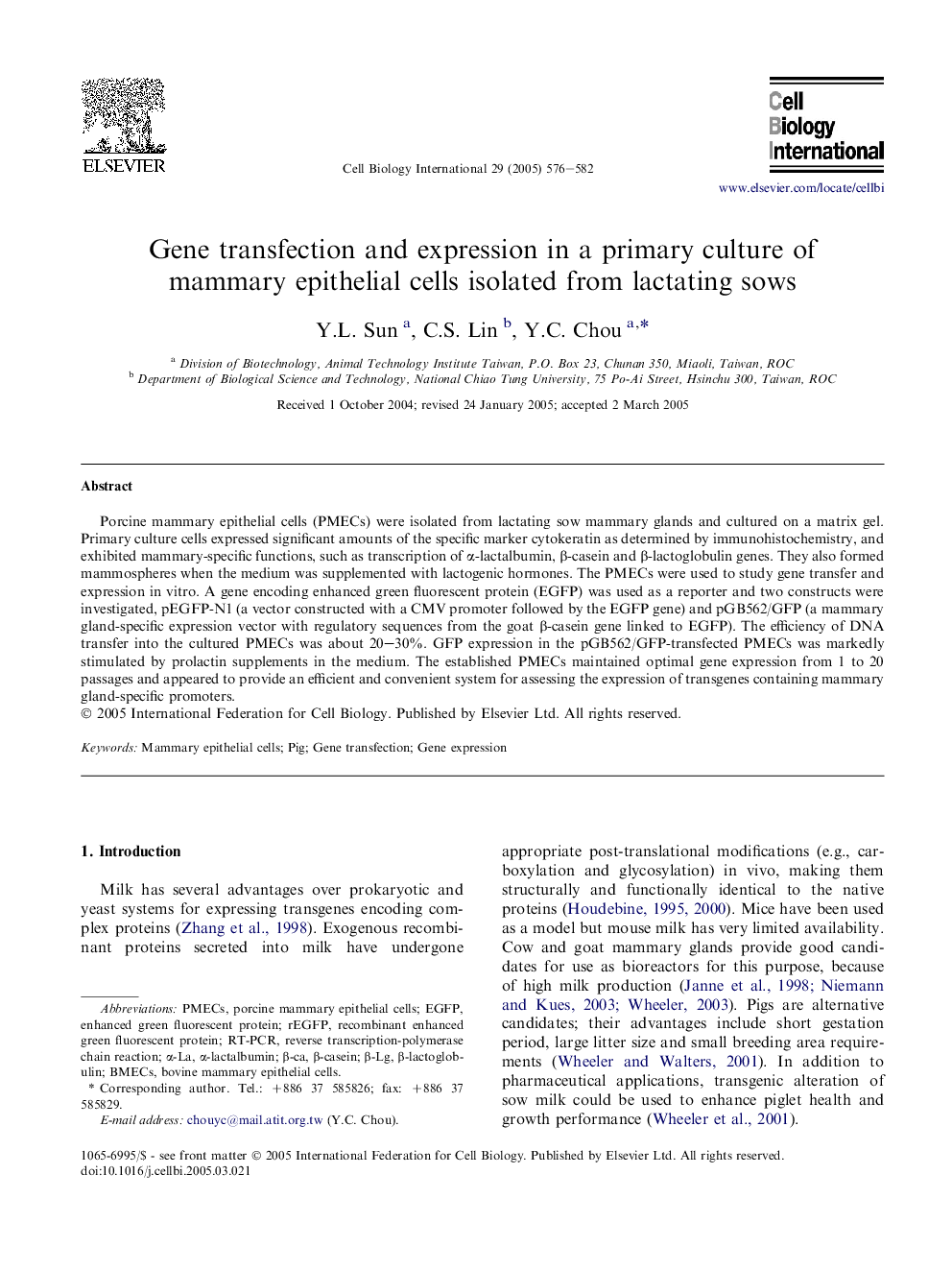| Article ID | Journal | Published Year | Pages | File Type |
|---|---|---|---|---|
| 10881851 | Cell Biology International | 2005 | 7 Pages |
Abstract
Porcine mammary epithelial cells (PMECs) were isolated from lactating sow mammary glands and cultured on a matrix gel. Primary culture cells expressed significant amounts of the specific marker cytokeratin as determined by immunohistochemistry, and exhibited mammary-specific functions, such as transcription of α-lactalbumin, β-casein and β-lactoglobulin genes. They also formed mammospheres when the medium was supplemented with lactogenic hormones. The PMECs were used to study gene transfer and expression in vitro. A gene encoding enhanced green fluorescent protein (EGFP) was used as a reporter and two constructs were investigated, pEGFP-N1 (a vector constructed with a CMV promoter followed by the EGFP gene) and pGB562/GFP (a mammary gland-specific expression vector with regulatory sequences from the goat β-casein gene linked to EGFP). The efficiency of DNA transfer into the cultured PMECs was about 20-30%. GFP expression in the pGB562/GFP-transfected PMECs was markedly stimulated by prolactin supplements in the medium. The established PMECs maintained optimal gene expression from 1 to 20 passages and appeared to provide an efficient and convenient system for assessing the expression of transgenes containing mammary gland-specific promoters.
Keywords
Related Topics
Life Sciences
Biochemistry, Genetics and Molecular Biology
Biophysics
Authors
Y.L. Sun, C.S. Lin, Y.C. Chou,
